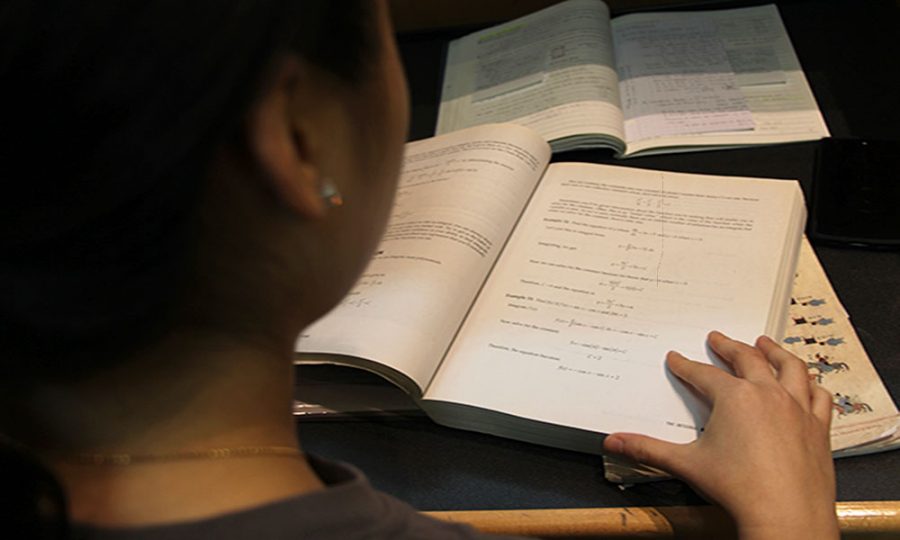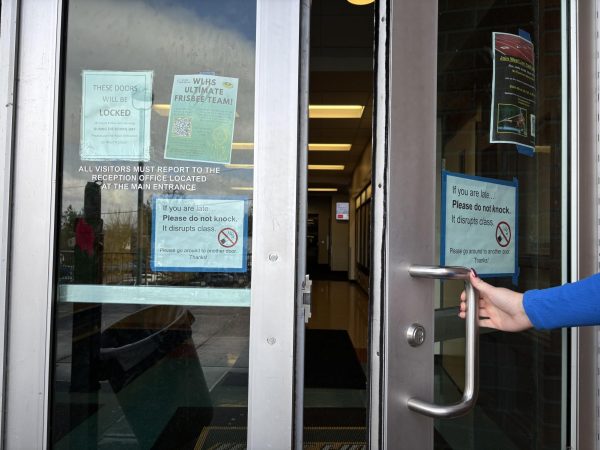Out With the Old, In With the New
The college board changes the SAT to be more reflective of what students are learning today
Bo Hyun An, senior, reviews and compares the old SATs to the new SATs. This year, the SATs were changed to help students for what they’ll learn in college. As a result, the students have found the SATs to be more applicable to in-school learning than last year.
Many high school juniors and seniors stress over taking their SATs, or the Scholastic Aptitude Test, in the springtime. But recently, College Board has made some major changes to the test in order to deliver more opportunities to low-income students and reflect what students were learning in school.
“Even among those who are ready, the majority of low-income, high-achieving students do not apply to the colleges within their reach. Our members called on us to do better,” Jaslee Caryol, Associate Director of College Board said.
College Board members conducted extensive listening tours of students grades in K-12 and higher education to observe what students were learning. This helped shape the options and content of the new exam.
This March, students discovered the new SAT reverted back to the previous 1600 point system from the ‘90s. The essay is now optional, though all schools in Ore. still require it. The guess penalty is also now nonexistent so students could give their best answer without fear of docked points for a wrong guess.
The SAT now also has new test specifications published online for those interested in improving their score and changed test questions to test common vernacular.
“[The College board] removed obscure vocabulary that students won’t use frequently in college or careers and instead focuses on the meaning of words in context,” Caryol said.
After the first SAT test was completed, the College Board translated data given to them by students who took the test and found 71% of students said the test reflected what they had been learning in school. On top that, 80% of students said the vocabulary tested would be useful to them later in life, compared with the 55% in March last year.
Overall, the exam was changed so students could focus on showing their strengths without learning test taking strategies and to give more opportunities to low-income students. The College Board thinks these changes will allow students “ to put their best foot forward on the SAT.”
Your donation will support the student journalists of West Linn High School. Your contribution will allow us to continue to produce quality content by purchasing equipment, software, and continuing to host our website on School Newspapers Online (SNO).

For some high school students, any thought afforded to the future is devoted to their next meal, next paycheck, or next like on Instagram. But Ji Hyun...


![Reaching out. Christopher Lesh, student at Central Catholic High School, serves ice cream during the event on March 2, 2025, at the Portland waterfront. Central Catholic was just one of the schools that sent student volunteers out to cook, prepare, dish, and serve food. Interact club’s co-president Rachel Gerber, junior, plated the food during the event. “I like how direct the contact is,” Gerber said. “You’re there [and] you’re just doing something good. It’s simple, it’s easy, you can feel good about it.”](https://wlhsnow.com/wp-content/uploads/2025/03/interact-1-edited-1200x744.jpg)





























































![At the bottom of the third inning, the Lions are still scoreless. Rowe stands at home plate, preparing to bat, while Vandenbrink stands off to the side as the next batter up. Despite having the bases loaded, the team was unable to score any runs. “It’s just the beginning of the season. We’re just going to be playing out best by June, [and] that’s where champions are,” Rowe said.](https://wlhsnow.com/wp-content/uploads/2024/03/IMG_3077-1200x900.jpg)





























































![Reaching out. Christopher Lesh, student at Central Catholic High School, serves ice cream during the event on March 2, 2025, at the Portland waterfront. Central Catholic was just one of the schools that sent student volunteers out to cook, prepare, dish, and serve food. Interact club’s co-president Rachel Gerber, junior, plated the food during the event. “I like how direct the contact is,” Gerber said. “You’re there [and] you’re just doing something good. It’s simple, it’s easy, you can feel good about it.”](https://wlhsnow.com/wp-content/uploads/2025/03/interact-1-edited-600x372.jpg)